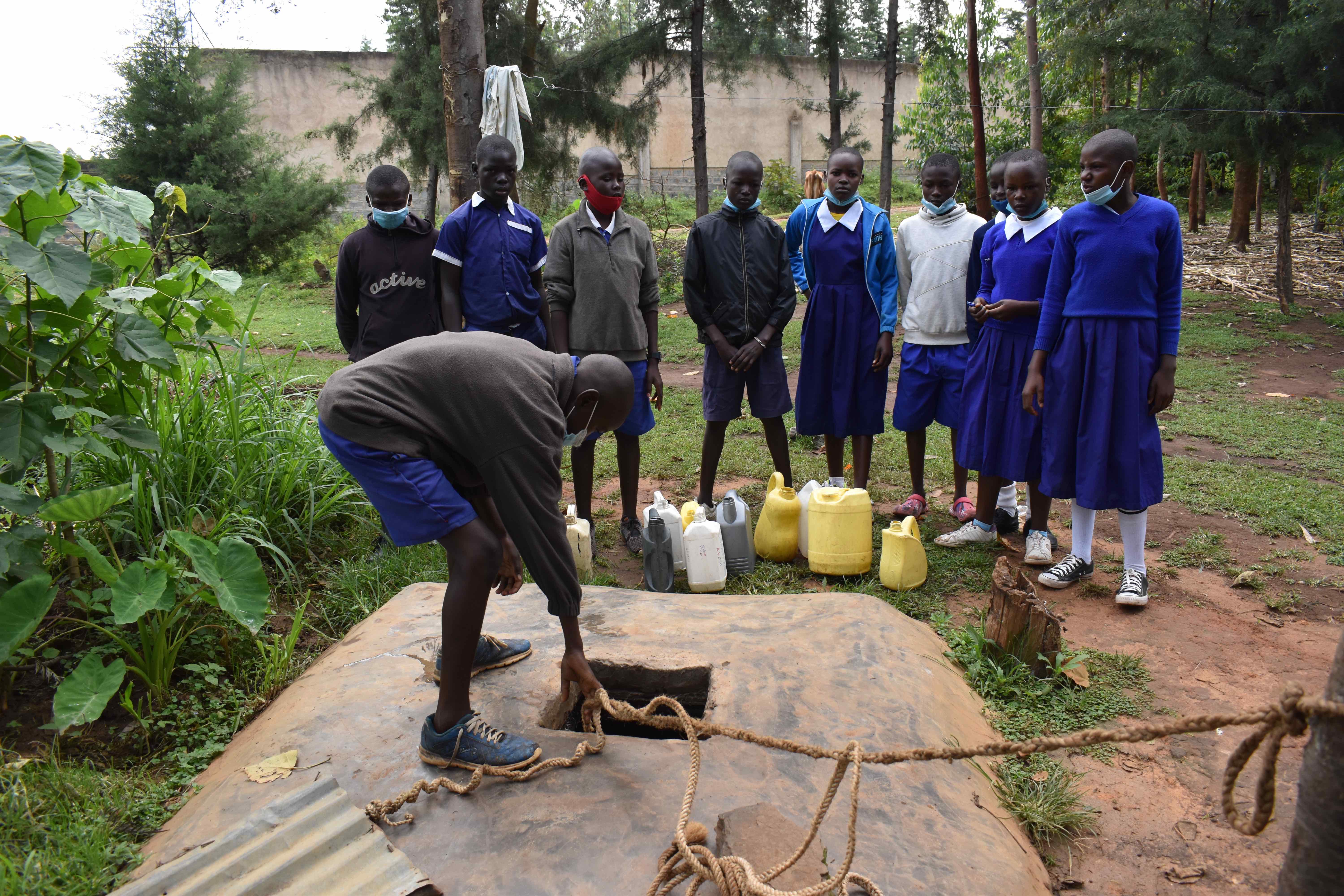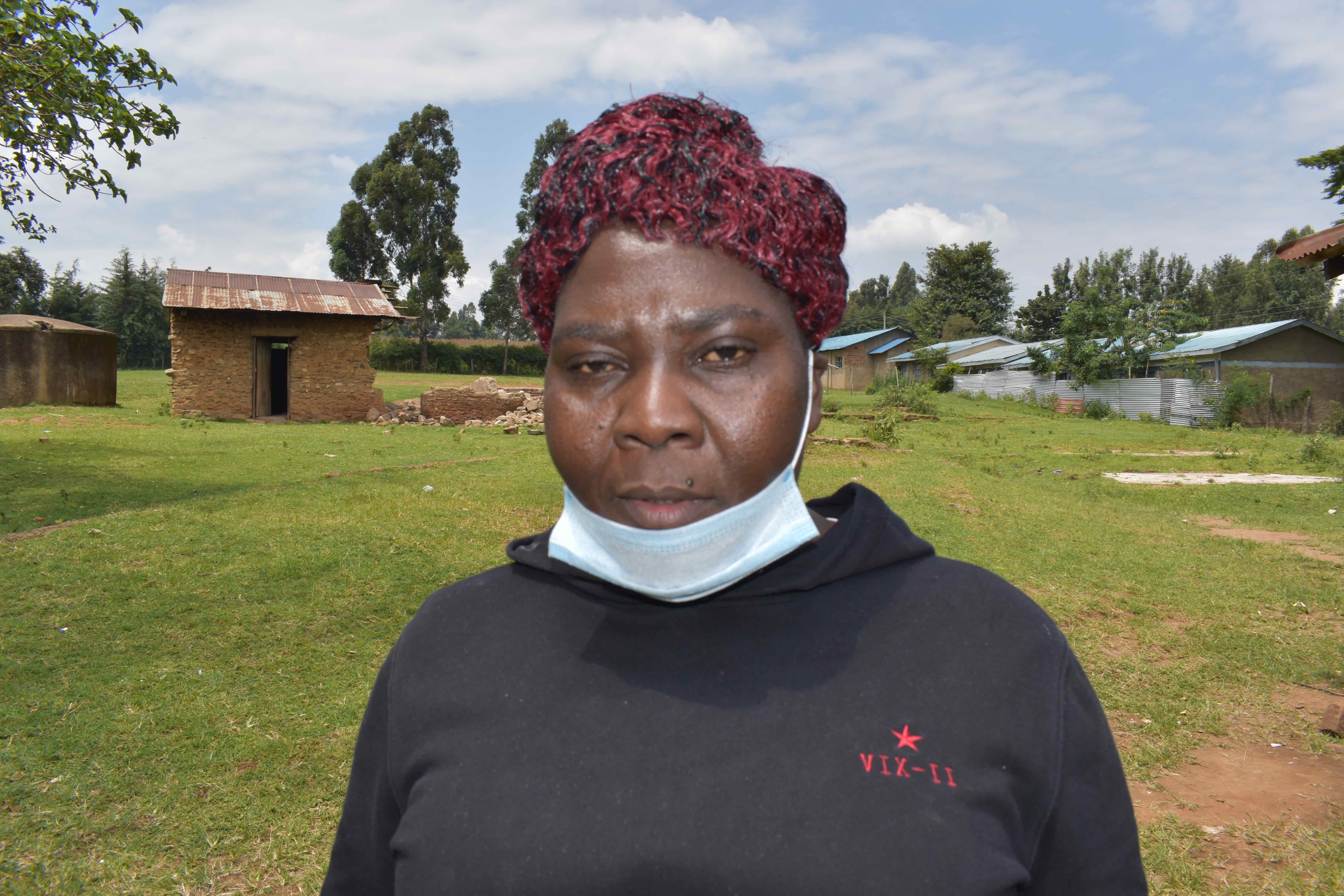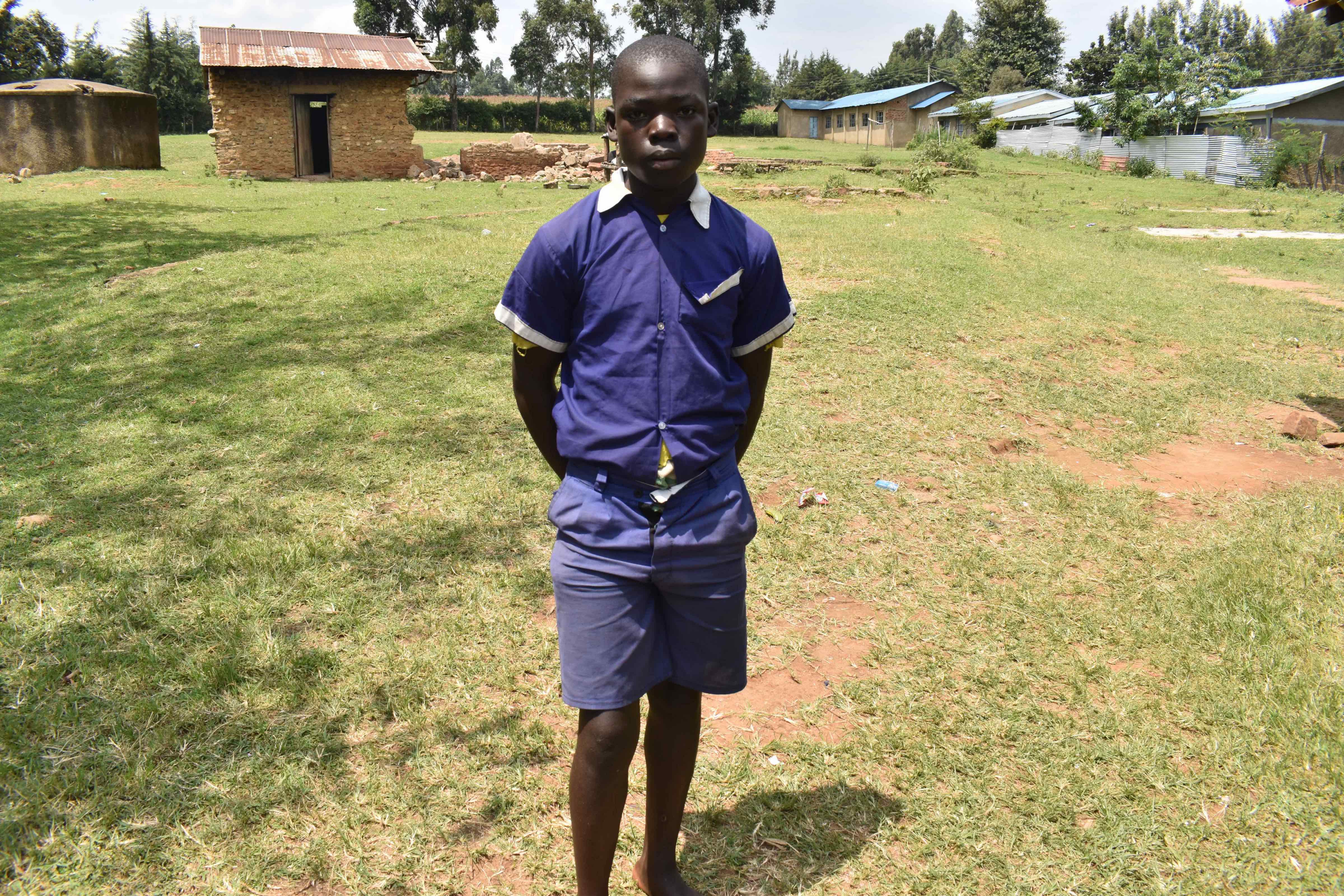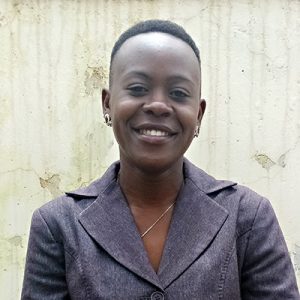The dirt road from the highway to Shiandiche Primary School is sandwiched between farms that grow sugarcane and other food crops in this green vegetative area that is appealing to the eye.
Shiandiche Primary School began in 1985 with 30 students, but has slowly grown to its current population of 571 students and staff. The school works hard despite all its challenges to perform well.
There is no water source at the school, so pupils have to collect water from their homes and other nearby sources to provide the water needed for drinking, cooking, and cleaning. Students sometimes retrieve water from a local well (shown below), which is time-consuming and challenging, not to mention a safety concern, especially for smaller and younger people.

The water crisis in the school destabilizes the learning schedule and makes academic progress challenging, affecting both students and teachers. Even if students bring water from home, teachers send students out to collect more water to meet the constant demand during the school day.

"I can have my lunch in school, but trust me, I'll go the whole day without water if I haven't carried mine from home. The end result is a headache that won't give me [an] easy time when teaching. All this is because there is no safe drinking water in school," shared teacher Mercy Mukabwa in the photo above.
Pupils bring water from home, and most days arrive late to school exhausted from hauling the heavy containers. If they do not come with water, they are sent home and miss out on their lessons.
The tension between parents and the school administration is growing since each thinks it is the other's responsibility to provide water. And students feel like they can't win: they receive punishment from their teachers for their tardiness and for failing to bring water to school.

Student Benaya N., age 14, shared his frustrations: "The punishment that comes with not bringing water to school is what bothers me so much. I carry that jerrycan in the morning, during break time, and when coming back from lunch. It's so tiresome."
A borehole well is the solution to helping pupils and teachers have sufficient clean water within the school compound.
What We Can Do:
New Well
We conducted a hydrogeological survey at this school and the results indicated the water table beneath it is an ideal candidate for a borehole well. Due to a borehole well's unique ability to tap into a safe, year-round water column, it will be poised to serve all of the water needs for this school's large population, even through the dry months.
The school will help collect the needed construction materials such as sand, rocks, and water for mixing cement. They will also provide housing and meals for the work team, in addition to providing local laborers. We will complement their materials by providing an expert team of artisans and drilling professionals, tools, hardware, and the hand-pump. Once finished, water from the well will then be used by the school's students and staff for drinking, handwashing, cooking, cleaning, and much more.
Handwashing Stations
There is currently nowhere for students to wash their hands after using the latrines or before eating lunch, let alone the water to do so.
The student health club will oversee the two new handwashing stations we will provide, and make sure they are kept clean and in working condition. The club leaders will fill the handwashing stations with water daily and make sure they are always supplied with a cleaning agent such as soap or ash.
VIP Latrines
We will construct two triple-door latrine blocks using local materials that the school will help gather. Three doors will serve the girls and three doors will serve the boys. All of these new latrines will have cement floors that are designed to be easy to use and to clean. And with a borehole right on school property, there should be enough water to keep them clean.
Training on Health, Hygiene, COVID-19, and More
We will hold a one-day intensive training session with students, teachers, and parents. This training will cover a wide range of topics including COVID-19 symptoms, transmission routes, and prevention; personal and environmental hygiene; and the operation and maintenance of the borehole, latrines, and handwashing stations. There will be a special emphasis on handwashing.
Our team of facilitators will use a variety of methods to train, including participatory hygiene and sanitation transformation, and asset-based community development. We will initiate a student health club, which will prepare students to lead other pupils into healthy habits at school and at home. We will also lead lectures, group discussions, and provide illustrative handouts to teach health topics and ways to promote good hygiene practices within the school including handwashing and water treatment. We will then conduct a series of follow-up trainings before transitioning to our regularly scheduled support visits throughout the year.
We and the school strongly believe that all of these components will work together to improve standards at this school, which will help lead to better student academic performance and will help unlock the opportunity for these students to live better, healthier lives.

 Borehole Well and Hand Pump
Borehole Well and Hand Pump
 Rehabilitation Project
Rehabilitation Project









































